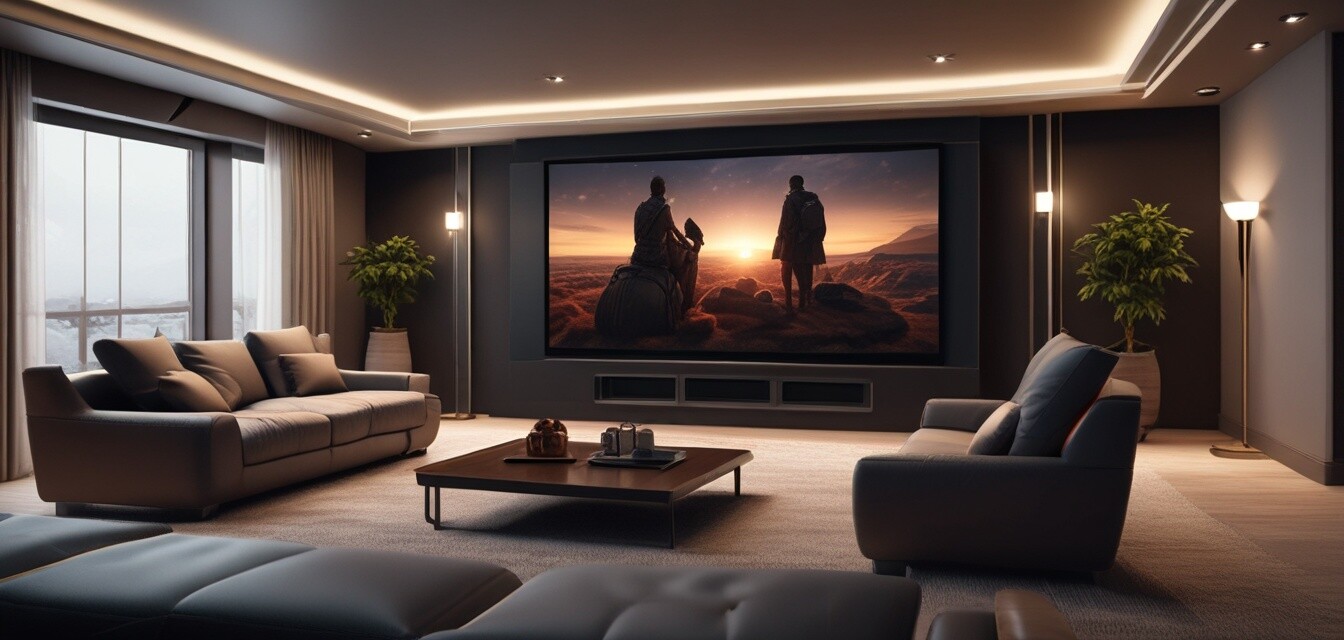
The Future of 3D Technology in Home Theaters
Key Takeaways
- 3D technology enhances immersion in home theater systems.
- Recent trends indicate increased consumer interest in 3D formats.
- Innovations in technology are expected to improve user experience.
- Compatibility with existing home theater systems is essential.
- Expect a focus on affordability and ease of use in the next generation of 3D technology.
The world of home theaters is ever-evolving. One of the most exciting advancements in this realm is the potential future of 3D technology. This article explores upcoming trends, consumer reception, and how 3D tech could transform your home theater experience. With advancements in visual technology and audio formats, understanding the future of 3D will equip you to make informed decisions about your home audio and visual setup.
The evolution of 3D technology
3D technology has come a long way since its initial introduction in the early 20th century. From Hollywood blockbusters that dazzled audiences to home systems that attempted to replicate the cinematic experience, the journey has been both fascinating and, at times, challenging. Below is a timeline of the major developments in 3D technology:
| Year | Development |
|---|---|
| 1950s | 3D films debut in theaters. |
| 1980s | 3D technology gains popularity with the rise of home video. |
| 2010s | 3D movies become mainstream again due to digital technology advancements. |
| 2020s | Emerging 3D home theater systems become more accessible. |
Current consumer reception
The reception of 3D technology among consumers has seen fluctuations. Initially, enthusiasm was high, resulting in a significant push from manufacturers. However, as trends shifted towards 2D formats and VOD services, interest in 3D saw a decline. Today, though, with advancements in projector and screen technologies, 3D is making a comeback.
Consumer preferences
Recent market research indicates a renewed consumer interest in 3D technology. Here are some insights into current preferences:
- Enhanced immersive experiences are a top priority for buyers.
- Consumers desire compatibility with existing systems for ease of integration.
- Affordability and variety of content are essential factors in consumer decisions.
Technological advancements on the horizon
As we look ahead, various technological advancements are expected to reshape the landscape of 3D technology in home theaters:
- Higher resolution displays: Expect 8K and beyond resolutions to redefine viewer experience.
- Improved glasses-free 3D: Innovations are being made in autostereoscopic displays, which aim to create 3D effects without the need for special glasses.
- Integration with next-gen audio formats: The integration of Dolby Atmos and other audio enhancements will complement the visual experience.
- Accessibility: Companies are working on making 3D systems more affordable to appeal to a larger audience.
The impact of trends in consumer electronics
The future of 3D technology in home theaters is intertwined with broader trends in consumer electronics. As technology advances, manufacturers focus on creating products that reflect consumer preferences. Consider the following:
| Trend | Impact on 3D Technology |
|---|---|
| Smart home integration | Seamless connectivity with music systems and smart devices increases the appeal. |
| Streaming services | Expansion of 3D content available for streaming can boost consumer demand. |
| Wireless technology | Wireless projection and audio systems simplify setup and use. |
Practical considerations for consumers
As you plan for the future of your home theater, consider these practical aspects regarding 3D technology:
- Explore different options in projectors and screens that support 3D technology.
- Keep an eye on setup tips for optimizing your home theater for a 3D experience.
- Stay updated on emerging trends in the audio-visual space to make informed decisions.
Conclusion
The future of 3D technology in home theaters looks promising, with advancements poised to enhance the user experience significantly. As consumer interest grows and manufacturers innovate, expect more versatility, improved technologies, and affordability in coming years. By staying informed and preparing for these changes, you can ensure that your home theater remains a cutting-edge entertainment oasis.
Tips for consumers
- Test 3D content if possible before investing in new hardware.
- Research reputable brands known for quality 3D systems.
- Consider room dimensions and viewing distance when choosing technology.
Pros
- Enhanced immersion during movie viewing.
- Innovative experiences in home gaming.
- Growing library of 3D content becomes available.
Cons
- Initial setup costs may be high.
- Content availability can be limited in some regions.
- Viewers may experience discomfort with prolonged use of 3D glasses.

